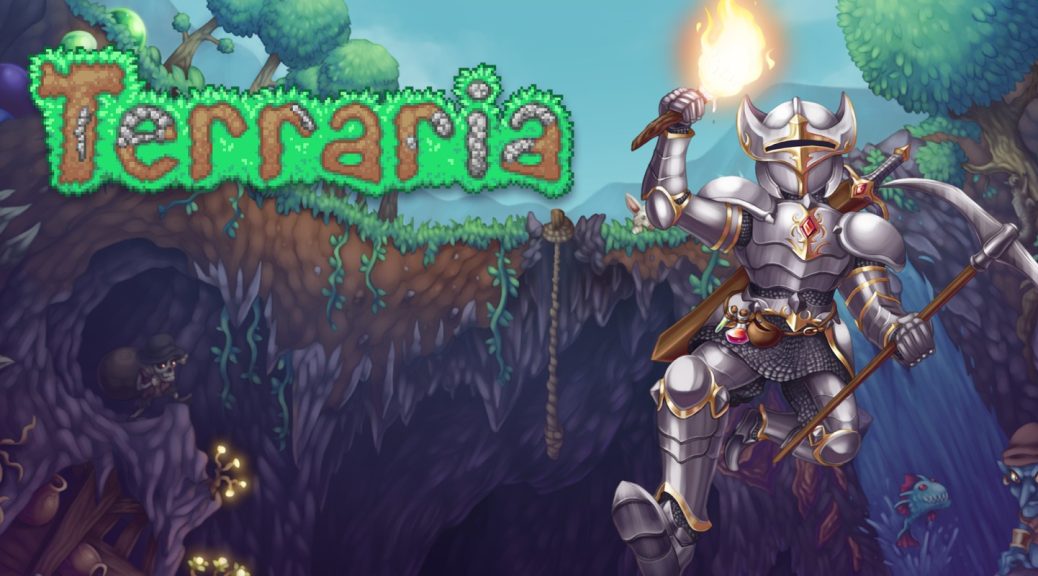
Terraria
I don’t remember why I bought Terraria. It’s been sitting in my Steam library for ages, ignored with the thought process of “I’ve played Minecraft; I can guess how it plays in 2D.” But since I can’t stand having purchased games go unplayed, I figured I’d try it for a few hours and see if there was anything more to it that could grab me. Fans of the game can put down their pitchforks, because it turns out that there really is a lot more to it than just 2D Minecraft. They can pick them back up again though, because none of it grabbed me enough to want to play more than the intended few hours, which by this game’s standards is barely a prologue.
The most important difference is that Terraria has a much greater emphasis on RPG mechanics and combat. This means the game has slightly more structure as well as something of an MMO feeling. What it does not necessarily mean is that the combat is any good. It’s the same kind of simplistic affair you’d expect, just with more variety, frequency, and scale. The game as a whole is very much about quantity over quality. It and its 3D inspiration strike me as successors to Scribblenauts – free-form games with an absurd number of objects with organic behaviours and interactions that are most entertaining when treated as a big, living toybox for you to fuck around in.
The chief reason I consider Terraria weaker than Minecraft is because while it is better when treated as a traditional game, it’s worse at the more important toybox part. 2D space is simply not as exciting to explore, and the slapdash platforming controls make spelunking generally inconvenient. Additionally, while I really want to stress that this game adds a lot of content of its own invention, the template it builds off of was so thoroughly codified by Minecraft that the thrill of discovery is regularly diminished. For what it’s worth, both games have phenomenal soundtracks (with the edge going to Terraria) and interfaces that are bafflingly terrible in equal measure.